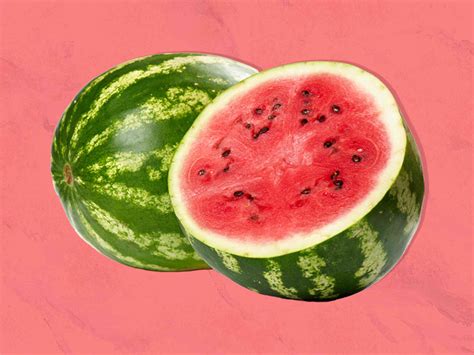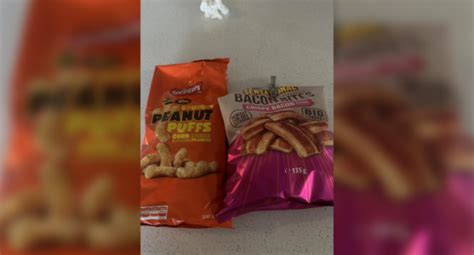
A father’s simple watermelon selection method is gaining traction online, promising to eliminate the guesswork and frustration of choosing a ripe fruit. The “field spot” theory, popularized in a recent online video, suggests that the color and characteristics of the discolored patch on a watermelon’s rind can indicate its ripeness and sweetness.
Picking the perfect watermelon can be a daunting task, often relying on subjective methods like thumping or examining the stem. However, one dad’s seemingly foolproof technique is making waves on social media, offering a more scientific approach to watermelon selection. The key, according to this method, lies in examining the “field spot,” also known as the ground spot, the area where the watermelon rested on the ground while ripening. According to the viral video, a creamy yellow or even orange field spot is a telltale sign of a sweet and ripe watermelon, while a white or pale field spot suggests the fruit was picked too early and may lack flavor.
Decoding the Field Spot: A Guide to Watermelon Ripeness
The field spot, or ground spot, is an area of the watermelon that doesn’t receive direct sunlight during its growth. As the watermelon ripens, it’s claimed that the color of this spot changes, offering clues about the fruit’s maturity and sweetness. The father’s method focuses specifically on the color of this spot as a primary indicator of ripeness.
- Creamy Yellow or Orange Field Spot: This is the ideal color, indicating that the watermelon spent enough time ripening on the vine. The color suggests a higher sugar content and a sweeter flavor profile. According to the viral video, this color indicates that the watermelon is ripe and ready to eat.
- White or Pale Field Spot: A white or pale-colored field spot suggests the watermelon was harvested prematurely. These watermelons may not have developed their full sweetness and flavor, resulting in a less satisfying experience. This indicates that the watermelon did not ripen long enough on the vine.
Beyond the color, the size and texture of the field spot are also considerations. A larger field spot may indicate that the watermelon had a longer ripening period, potentially leading to enhanced sweetness. The texture should be relatively smooth, without any signs of damage or decay.
Beyond the Field Spot: Additional Factors to Consider
While the field spot method has gained popularity, it’s important to consider other factors when selecting a watermelon. Experienced farmers and fruit vendors often employ a combination of techniques to ensure the quality of their produce. Here are some additional factors to keep in mind:
- Sound: The classic “thump test” involves tapping the watermelon and listening to the sound it produces. A deep, hollow sound generally indicates a ripe watermelon, while a dull or flat sound may suggest it is either underripe or overripe. This method relies on the internal density and moisture content of the fruit.
- Weight: A ripe watermelon should feel heavy for its size, indicating high water content and juiciness. Comparing watermelons of similar size can help determine which one feels heavier and potentially riper.
- Stem: The stem, or peduncle, is the point where the watermelon was attached to the vine. A dried or brown stem often indicates that the watermelon is ripe, as it naturally detaches from the vine when it reaches maturity. A green stem, on the other hand, may suggest that the watermelon was picked prematurely.
- Shape: A symmetrical and well-rounded watermelon is generally preferred, as it indicates uniform growth and ripening. Avoid watermelons with irregular shapes, dents, or soft spots, as these may be signs of damage or uneven ripening.
- Webbing: The presence of webbing, or sugar netting, on the watermelon’s surface can also indicate ripeness. These brown, web-like lines are caused by sugar seeping out of the fruit as it ripens. More webbing generally suggests a sweeter watermelon.
The Science Behind Watermelon Ripening
Watermelon ripening is a complex biochemical process involving changes in sugar content, acidity, and texture. As the watermelon matures, it converts starches into sugars, primarily glucose, fructose, and sucrose. This conversion is influenced by factors such as sunlight, temperature, and water availability.
The field spot plays a role in this process by reflecting the area of the watermelon that received less direct sunlight. While the entire watermelon undergoes ripening, the field spot may exhibit slightly different characteristics due to the reduced exposure to sunlight. The color change in the field spot, from white to yellow or orange, is believed to be associated with the breakdown of chlorophyll and the accumulation of carotenoids, pigments that contribute to the yellow and orange hues.
The practice of judging a watermelon by its field spot connects to the understanding of how fruits develop sugars as they ripen on the vine. Melons left to mature naturally on the vine tend to have a higher sugar content and richer flavor compared to those harvested early. This connection underscores the importance of allowing watermelons to ripen fully before harvesting them, ensuring optimal sweetness and taste.
Expert Opinions and Perspectives
While the viral video has popularized the field spot method, it’s essential to consider expert opinions from farmers, agricultural scientists, and experienced fruit vendors. These professionals often have a deeper understanding of watermelon cultivation and ripening processes.
Many experts agree that the field spot can be a useful indicator of ripeness, but it should not be the sole factor in selecting a watermelon. They emphasize the importance of considering other factors, such as sound, weight, stem condition, and overall appearance.
Some experts also caution against relying solely on the color of the field spot, as it can be influenced by factors such as soil type, weather conditions, and watermelon variety. They recommend using a combination of techniques to assess ripeness accurately.
Debunking Myths and Misconceptions
The widespread sharing of the watermelon selection method has also led to some myths and misconceptions. It’s crucial to address these inaccuracies and provide a balanced perspective.
- Myth: A completely orange field spot guarantees a perfectly ripe watermelon.
- Reality: While an orange field spot is generally a good sign, it doesn’t guarantee perfection. Other factors, such as internal damage or overripeness, can still affect the quality of the watermelon.
- Myth: The field spot is the only reliable indicator of watermelon ripeness.
- Reality: As mentioned earlier, the field spot should be considered in conjunction with other indicators, such as sound, weight, and stem condition.
- Myth: All watermelons with a white field spot are unripe and tasteless.
- Reality: While a white field spot is less desirable, it doesn’t necessarily mean the watermelon is completely unripe. It may still be edible, but it might not have reached its full sweetness potential.
Watermelon Varieties and Their Characteristics
The effectiveness of the field spot method can also vary depending on the watermelon variety. Different varieties have different ripening characteristics, and the color of the field spot may not be as reliable for some varieties as it is for others. Here are some popular watermelon varieties and their characteristics:
- Crimson Sweet: A classic watermelon variety known for its sweet, red flesh and dark green rind with irregular stripes.
- Sugar Baby: A small, round watermelon with a dark green rind and sweet, red flesh. It is a popular choice for smaller gardens.
- Jubilee: A large, oblong watermelon with a light green rind and sweet, red flesh. It is known for its high yield and disease resistance.
- Seedless Watermelons: These varieties are bred to produce watermelons with few or no seeds. They are generally sweeter and juicier than seeded watermelons. Common seedless varieties include Triploid and Pollenizer.
- Yellow Watermelons: These watermelons have yellow flesh and a sweeter, honey-like flavor compared to red watermelons. They are becoming increasingly popular due to their unique color and taste.
Watermelon Cultivation: A Brief Overview
Understanding watermelon cultivation practices can provide valuable insights into the factors that affect ripeness and quality. Watermelons are typically grown in warm climates with plenty of sunlight and well-drained soil. The growing season for watermelons is typically from late spring to early fall.
Watermelon farmers use various techniques to ensure optimal growth and ripening. These include:
- Soil Preparation: Preparing the soil with compost and other organic matter to improve drainage and fertility.
- Planting: Planting watermelon seeds or seedlings in rows or hills, providing adequate spacing for growth.
- Irrigation: Providing regular irrigation to ensure consistent moisture levels, especially during dry periods.
- Fertilization: Applying fertilizers to provide essential nutrients for growth and fruit development.
- Pest and Disease Control: Implementing measures to prevent and control pests and diseases that can affect watermelon crops.
The Role of Technology in Watermelon Selection
In recent years, technology has also played a role in watermelon selection. Some companies have developed devices that can measure the internal sweetness and ripeness of watermelons using non-destructive methods. These devices use sensors to analyze the watermelon’s internal composition and provide an objective assessment of its quality.
While these technologies are not yet widely available to consumers, they have the potential to revolutionize the way watermelons are selected and marketed. They can help farmers and retailers ensure that they are offering consistently high-quality watermelons to consumers.
Practical Tips for Watermelon Storage and Consumption
Once you have selected a ripe watermelon, it’s important to store it properly to maintain its freshness and flavor. Here are some practical tips for watermelon storage and consumption:
- Whole Watermelons: Store whole watermelons in a cool, dry place away from direct sunlight. They can typically be stored for up to two weeks at room temperature.
- Cut Watermelons: Cut watermelons should be stored in the refrigerator in an airtight container. They can typically be stored for up to five days.
- Serving: Serve watermelon chilled for optimal flavor and refreshment.
- Preparation: Watermelon can be enjoyed in a variety of ways, including sliced, cubed, or blended into smoothies and juices.
- Recipes: Watermelon can also be used in a variety of recipes, such as salads, salsas, and desserts.
Nutritional Benefits of Watermelon
Watermelon is not only delicious but also packed with nutrients. It is a good source of vitamins A and C, as well as antioxidants like lycopene. Watermelon is also low in calories and high in water content, making it a hydrating and healthy snack.
Some of the key nutritional benefits of watermelon include:
- Hydration: Watermelon is about 92% water, making it an excellent choice for staying hydrated, especially during hot weather.
- Vitamins and Minerals: Watermelon is a good source of vitamins A and C, which are important for immune function and skin health. It also contains potassium, which is important for maintaining healthy blood pressure.
- Antioxidants: Watermelon is rich in antioxidants like lycopene, which has been linked to a reduced risk of certain types of cancer and heart disease.
- Fiber: Watermelon contains fiber, which is important for digestive health and can help regulate blood sugar levels.
- Low Calories: Watermelon is low in calories, making it a healthy snack option for those watching their weight.
The Cultural Significance of Watermelon
Watermelon has a rich cultural significance in many parts of the world. It is often associated with summer, picnics, and outdoor gatherings. In some cultures, watermelon is also a symbol of prosperity and good luck.
In the United States, watermelon has a complex history, particularly in relation to African Americans. While it has been unfairly used as a racist stereotype, watermelon is also celebrated within the Black community as a symbol of resilience, community, and shared cultural heritage.
The Future of Watermelon Selection
As technology continues to advance, the future of watermelon selection is likely to involve more sophisticated methods and tools. Non-destructive testing devices, artificial intelligence, and data analytics could all play a role in helping consumers choose the perfect watermelon.
Farmers may also use these technologies to optimize their growing practices and ensure that they are producing watermelons with consistent quality and flavor. This could lead to a more reliable and satisfying watermelon-eating experience for consumers.
Frequently Asked Questions (FAQ)
-
How reliable is the “field spot” method for picking a ripe watermelon?
- The “field spot” method, focusing on the color of the ground spot, can be a useful indicator. A creamy yellow or orange spot suggests ripeness, while a white spot may indicate the watermelon was picked too early. However, it should be used in conjunction with other methods like checking the sound, weight, and stem condition for a more accurate assessment.
-
What does it mean if a watermelon has a large field spot?
- A larger field spot might indicate that the watermelon rested longer on the ground while ripening, potentially leading to enhanced sweetness. However, the color of the spot is more crucial than the size. Ensure the spot is creamy yellow or orange, regardless of size, for a better chance of selecting a ripe watermelon.
-
Besides the field spot, what other factors should I consider when choosing a watermelon?
- Other critical factors include: the sound (a deep, hollow sound indicates ripeness), the weight (a ripe watermelon should feel heavy for its size), the stem (a dried or brown stem suggests ripeness), the shape (look for symmetrical and well-rounded watermelons), and the presence of webbing (sugar netting) which can indicate sweetness.
-
Can the watermelon variety affect the reliability of the field spot method?
- Yes, different watermelon varieties have different ripening characteristics, so the field spot color may not be as reliable for some varieties. It’s always best to combine the field spot method with other indicators, regardless of the variety. Researching the specific characteristics of the watermelon variety you’re choosing can also be helpful.
-
How should I store a watermelon after I’ve picked it to ensure it stays fresh?
- Whole watermelons should be stored in a cool, dry place away from direct sunlight and can last up to two weeks. Cut watermelons should be stored in an airtight container in the refrigerator and consumed within five days to maintain freshness.
Conclusion
The viral “field spot” trick offers a seemingly simple method for selecting a ripe watermelon, emphasizing the importance of the ground spot’s color. While the creamy yellow or orange hue does often correlate with ripeness, it’s crucial to understand that this is just one piece of the puzzle. Combining the “field spot” assessment with traditional techniques – such as the thump test, weight comparison, and stem examination – provides a more comprehensive approach to watermelon selection. Expert opinions also advocate for a holistic consideration, acknowledging that factors like watermelon variety, soil conditions, and weather can influence ripeness. By integrating multiple evaluation methods, consumers can increase their chances of enjoying a perfectly ripe and refreshing watermelon. As technology evolves, more advanced selection tools might emerge, but for now, combining the “field spot” trick with established techniques remains a practical and informative approach.









